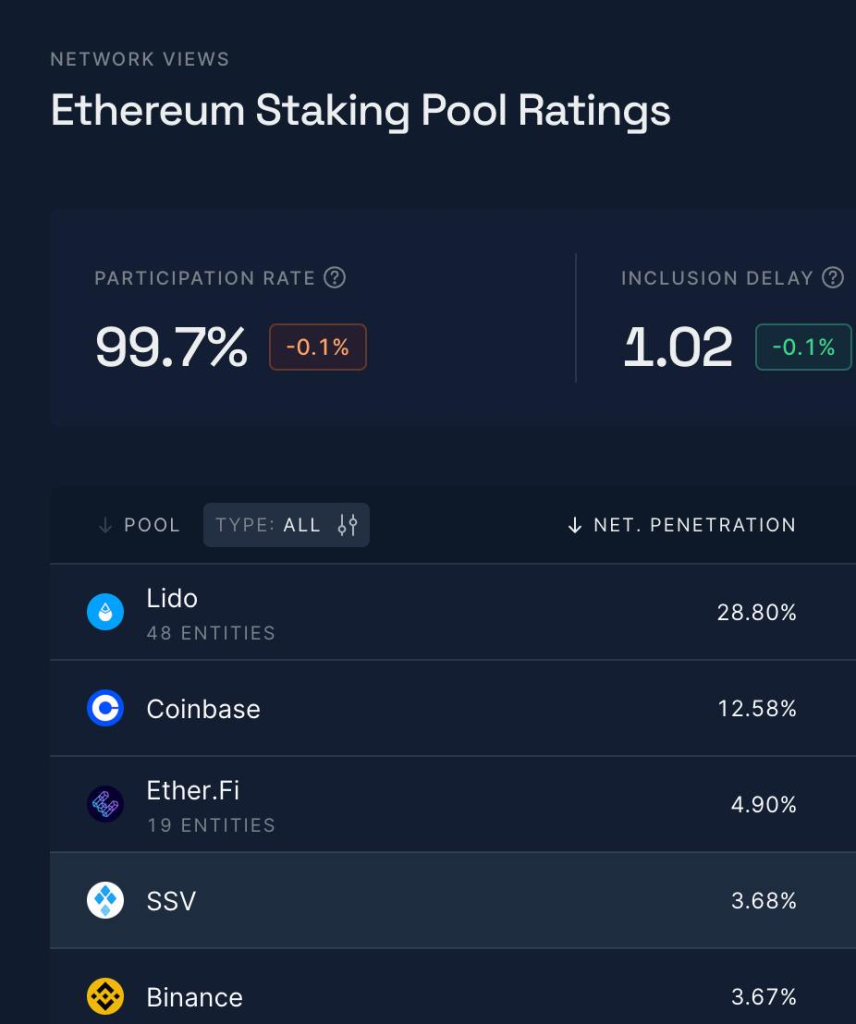It’s not often that Binance is overtaken in any of the numerous crypto sectors it dominates. But it’s just been surpassed in an industry where it has a significant presence – and a significant amount of assets at stake. Quite literally, until recently Binance was the fourth largest Ethereum staking service. Recently, however, it temporarily relinquished its crown to a competitor that has been hot on its heels for quite some time now – SSV.
While SSV Network’s leap into fourth place was short-lived, with Binance subsequently reclaiming its position, it can be taken as a statement of intent. SSV’s achievement doesn’t just augur well for its non-custodial ETH staking service but for the health of the entire Ethereum staking ecosystem. That’s because SSV’s growth is indicative of a tech it’s been instrumental in developing and which is now used industry-wide to distribute Ethereum’s validator set: DVT.


SSV Ascends the Staking Pool Rankings
Ethereum stakers have a number of established non-custodial staking pools to choose from. These enable stakers to deposit less than the 32 ETH minimum required to run a validator and free stakers from needing to concern themselves with hardware setup and maintenance. Their ease of use, coupled with the ability to withdraw ETH almost instantly, have made them the preferred staking solution for millions.
Lido has long dominated the Ethereum staking landscape, capturing around 28% of all staked ETH, while Coinbase is in second place. These two staking giants are unlikely to be displaced any time soon but the remainder of the top five is extremely close.
Ether.fi is currently in third place, with a share of around 5%, leaving fourth and fifth spot neck-and-neck between Binance and SSV. Having fleetingly overtaken Binance, which commands 3.79%, SSV is now just behind it on 3.63%. It’s a remarkable ascent for SSV, which has seen rapid growth since launching in January.
SSV now has a TVL of more than $3.3B, with close to 1.3M ETH staked and over 40,000 validators running SSV’s staking client. In the Ethereum staking pool ratings, SSV also scores highly for rated effectiveness rating (RAVER) on 97%. This is a measure of how well validators have been operating over time, awarding points for effectively completing duties.
DVT Adoption Ramps Up
SSV has been a leading advocate of distributed validator technology, having seen its Simple DVT module integrated into numerous staking protocols. This serves to diversify the node operator set and enables solo stakers to participate as node operators. DVT helps to increase client diversity, enhance fault tolerance, and reduce reliance on dominant validator sets, resulting in a stronger and more decentralized Ethereum staking landscape.
In addition to seeing its TVL soar, SSV has made significant progress in onboarding developers seeking to build DVT-powered staking and restaking applications. Through integrating SSV, restaking protocols can extend Ethereum’s crypto-economic security to L2 while securing its base layer. SSV’s DVT infrastructure enables ETH validator nodes to be distributed geographically between multiple machines, eliminating single points of failure and increasing resilience.
DVT has been one of the success stories of the current market cycle as staking protocols have integrated the technology and developers have created staking apps that utilize it to strengthen the validator set available to the consumer and enterprise segments they serve. SSV’s ascent of the Ethereum rankings isn’t just a testament to its success as a staking solution: it’s also a meaningful metric for charting DVT adoption.


